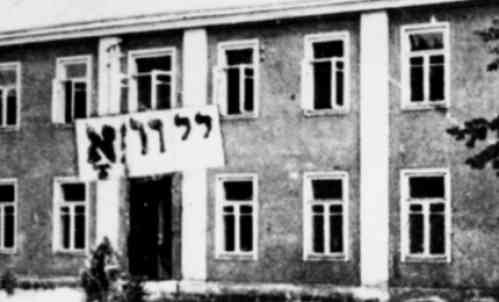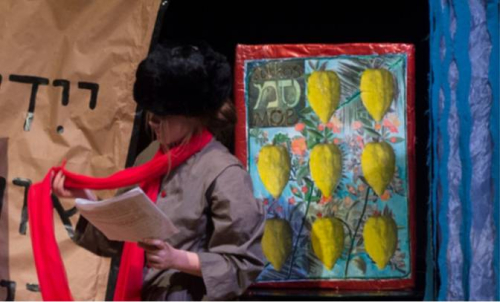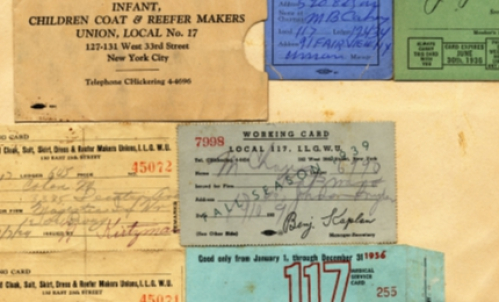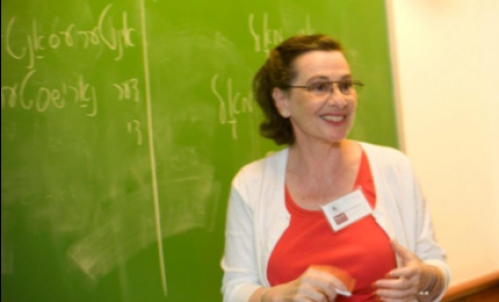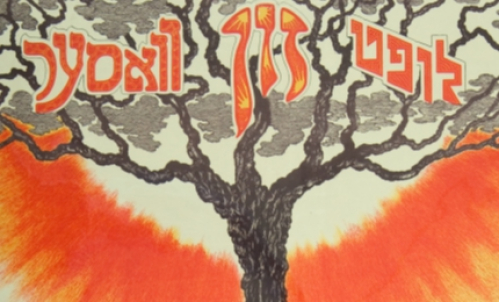A Yiddish Library in Search of a Home: The Yiddish Academy Library in South Africa
by ROBERTA NEWMAN
The Yiddish Academy library is looking for a new home and it needs one fast.
The 2,000-volume library is currently in a temporary storage space at Beyachad, the Jewish Community Center of Johannesburg, South Africa, but has been asked to vacate. “Many of the books are very valuable,” notes Cedric Ginsburg, a Yiddish Academy lecturer and activist. “Some were published in Vilna; some in South Africa. In fact, we have a pretty good coverage of South African Yiddish literature."
The library is only one project of the fledgling Yiddish Academy, a new organization first conceived in 2001 by translator and scholar Joseph Sherman (1934-2009) and Eli Goldstein, a businessman, who is today based in Johannesburg and Toronto. They started with Yiddish classes for a few students in 2003, and by 2006, the organization was stable enough to register as an official club.
"Our mission is not just to teach Yiddish but to promote the cultural aspects of Yiddish,” Goldstein comments. “A lot of Lithuanian Yiddish culture is very rich." He grew up in a farming community. His grandfather was an early immigrant from Lithuania, who immigrated to South Africa in 1899, and became a farmer. Goldstein lived in his grandparents’ home until he was eleven, and his grandfather spoke to him mainly in Yiddish. “I think there’s a strong nostalgia linked to that.” But he has “a thirst for learning more.” He studied Yiddish while in university in Johannesburg at the Jewish Students Association.
More than 90% of South African Jews are the descendants of Jews from Lithuania, most of whom arrived in South Africa beginning in the 1880s, increasing what had been a tiny community of 4,000 to 40,000 by 1914. Jewish immigration from Europe was brought to almost a complete halt as a result of the Aliens Acts of 1930 and 1937. "That cut off the immigration of Jews to South Africa,” Ginsburg notes. “And that act was not really ever repealed and so after the Holocaust very few survivors ended up in South Africa— the number may be as low as 400."
Yiddish fell into a decline. After World War II, there was a shift of emphasis to Zionism and Hebrew. Assimilation and acculturation also took its toll. "To be an up and coming businessman it wouldn't do to speak with an accent,” Goldstein points out, “much less, speak Yiddish.”
But in the last 20 years, there has been a renewed interest in Yiddish on the part of younger generation. About a third of the 60,000-member Jewish community is ultra-Orthodox and the rest are mostly Modern Orthodox. “There are some Reform Jews and then others who keep up customs more than religion,” Goldstein notes. “Some of the Chabad people speak Yiddish, but not as much as in New York. But there is a thirst for Yiddish, even if only on a nostalgic level.”
The Yiddish Academy library came about when the organization inherited the private libraries of Yiddish-speaking Jews, such as the actress Bertha Englander, and several Yiddish writers. It may constitute the best collection of South African Yiddish literature anywhere in the world, containing works by Nehemiah Levinsky, Mendel Tabatznik, Dovid Wolpe, and Leibl Feldman, among others. Within its holdings are a complete run of the journal Dorem Afrike (South Africa) and many issues of the weekly, Der afrikaner yidisher tsaytung (The African Yiddish Newspaper). It also includes a full set of Shmuel Rozhanski’s multivolume Musterverk fun der yidisher literatur (Masterpieces of Yiddish Literature).
There are few other resources for accessing Jewish literature in South Africa and none for Yiddish books. Aside from the Yiddish Academy library, there is an important collection of late 19th-century-early 20th century Hebrew books at the University of Witwatersrand, the private library of the former Chief Rabbi of South Africa, Rabbi Judah Leib Landau.
The Yiddish Academy library has never had a proper home and most of the books are still in boxes. The original idea was that it would eventually become part of the regular library at Beyachad. "But that never seemed to happen," Goldstein reports, and now they urgently need to find a new home for the books. “The best solution would be some kind of home that would include reading areas and provide us with the ability to lend out some of the books. We don’t have the resources to go it alone. We need to tag on to another organization or facility, such as a synagogue or something like that."
"Ideally,” he adds, “we would prefer that the books remain in South Africa because we want to foster Yiddish there, and there should be resources for students to study Yiddish from. It would be a real shame if South Africa were to lose its entire legacy of Yiddish culture."
Both Ginsburg and Goldstein welcome ideas and/or offers for help or support. They can be contacted at yiddishacademy@gmail.com . “We would welcome any kind of support that would help us grow in South Africa,” Goldstein says. “It’s very important for us not to lose this.”
